Medals relating to Engineering
As always, you can click or tap medals to see the reverse. Some medals might have multiple variants that differ in material, size, or other details. If multiple variants are available you can drag or slide medals sideways to display them.
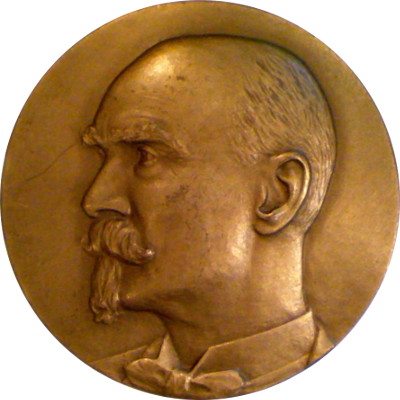
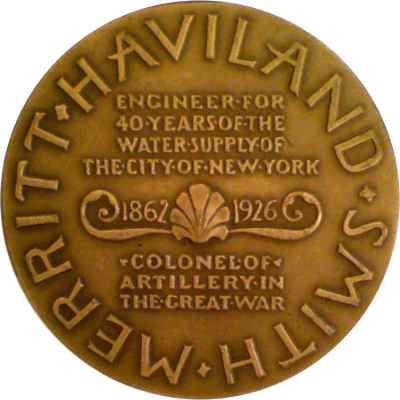
This medal's obverse bears portrait of Smith facing left.
The reverse bears text. Around, MERRIT · HAVILAND · SMITH ·; in center, ENGINEER · FOR / 40 · YEARS · OF · THE / WATER · SUPPLY · OF / THE · CITY · OF · NEW · YORK / 1862 (shell) 1926 / · COLONEL · OF · / ARTRILLERY · IN / THE · GREAT · WAR
Merrit Haviland Smith was born on May 21, 1862 in New York City. After an education in public schools and additional private tutors he graduated from the Pennsylvania Military College with a degree in civil engineering in 1880. After three years with the Pittsburgh and Western Railroad he joined the New York City Department of Public Works where he worked for the rest of his civilian life. In addition to his service as an Artillery Colonel in World War I, he also served with the New York National Guard in Puerto Rico from 1898 to 1899. He died in 1926.
This medal appears to be a copy of the bronze plaque erected in his memory at Kensico Dam shortly after his death in 1926.
The circular medal measures 50.4mm in diameter and was struck in bronze by the Medallic Art Company of New York. No mintage is reported.
References: MACo 1928-033
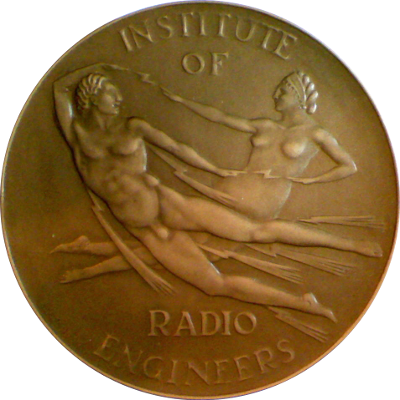
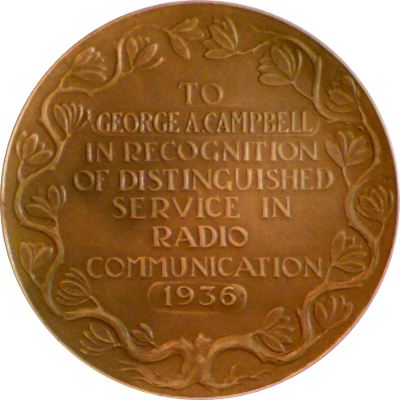
This medal's obverse bears nude male and female figures in flight, representing electromagnetism, lightning surrounding male figure and small bolts between the two figures' hands. Above and below, INSTITUTE / OF / RADIO / ENGINEERS
The medal's reverse bears decorative branches in wreath shape around dedication in center field, TO / GEORGE A. CAMPBELL / IN RECOGNITION / OF DISTRINGUISHED / SERVICE IN / RADIO / COMMUNICATION / 1936
The edge is marked with MEDALLIC ART CO. N.Y. BRONZE
The Institute of Radio Engineers was a professional organization which existed from 1912 until 1962. In 1963 it merged with the American Institute of Electrical Engineers (AIEE) to form the Institute of Electrical and Electronics Engineers (IEEE). Starting in 1917, the Institute awarded its Medal of Honor to engineers who had created useful advances in the field of radio communications. The award recipient in 1936 was Dr. George A. Campbell, a retired scientist, for his contribution to the theory of electrical networks. He invented the electric wave filter, a foundational element of modern electronic communications equipment.
The medal is still issued today under the auspices of the IEEE.
The medal measures 76mm in diameter and was struck in bronze and gold by the Medallic Art Company of New York.
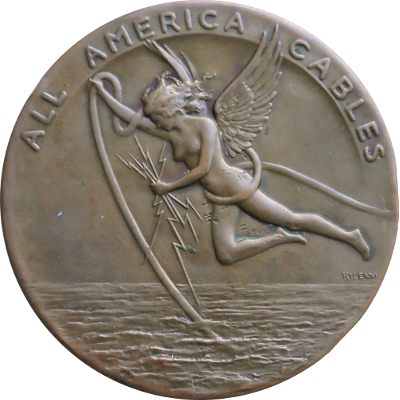
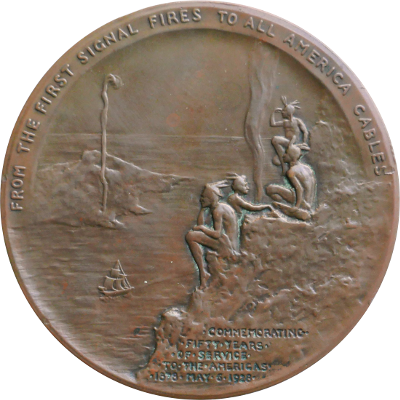
The medal's obverse bears winged female over ocean, bundle of lightning bolts in one hand, thick cable in other. Around top, ALL AMERICA CABLES; signed over ocean surface at right, KILENYI
The reverse shows coastal scene with four natives on promontory signaling the arrival of a European sailing vessel across bay by way of smoke signals. Around top, FROM THE FIRST SIGNAL FIRES TO ALL AMERICA CABLES; at bottom, COMMEMORATING / FIFTY YEARS / OF SERVICE / TO THE AMERICAS / 1878 · MAY · 6 · 1928 ·
All America Cables was formed in February 1920 when it took over the assets of the Central and South American Telegraph Company. In 1938 All America Cables merged with the Commercial Cable Company and Mackay Radio & Telegraph to form the American Radio and Cable Corporation.
The circular medallion measures 82mm in diameter and was struck in bronze by the Whitehead & Hoag Company of Newark, New Jersey.